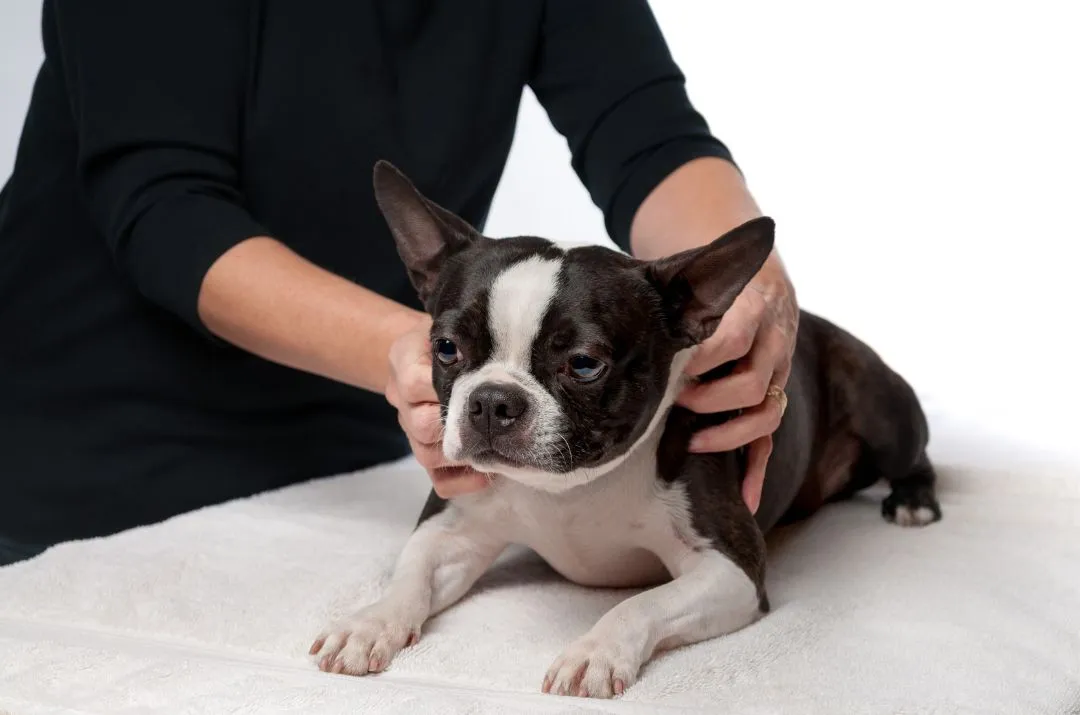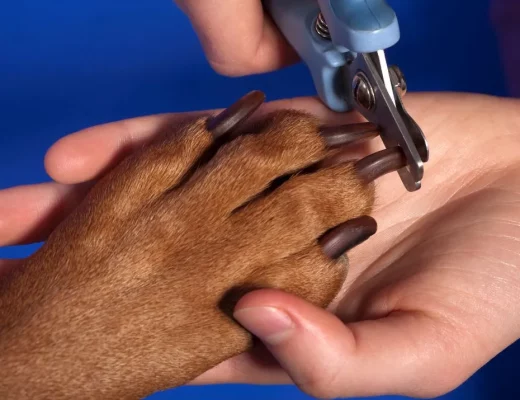As a pet owner, you know how important it is to keep your furry friend happy and healthy. While walks and playtime are crucial, giving your dog a massage can also provide a host of benefits. Massages can help to reduce stress, alleviate pain, and increase flexibility. In this article, we’ll go over some tips on how to give your dog a massage to keep them feeling their best.

Why Give Massage
Massaging your dog is a great way to improve their overall well-being. Massages can help to reduce stress and anxiety, improve circulation, and increase flexibility. Additionally, regular massages can also help to detect any potential health problems early on.
Preparing
Before giving your dog a massage, it’s important to set the mood. Choose a quiet and relaxing location, and make sure your dog is calm and comfortable. Have some treats on hand to reward your pup for good behavior. 
How to Massage
Start by using long, gentle strokes to help your dog relax. Move on to deeper pressure, but always be gentle and avoid any areas that may be sensitive or painful. Remember to focus on areas where your dog holds tension, such as the neck, shoulders, and back.
Massage Techniques
Head and Neck Massage: This can help to relieve tension and headaches. Use circular motions on the top of the head, and gentle strokes on the neck. Shoulder and Back Massage: This can help to reduce tension and improve flexibility. Use gentle kneading motions on the shoulders and long strokes down the back. Leg and Foot Massage: This can help to improve circulation and reduce muscle soreness. Use circular motions on the legs and gentle pressure on the paws.
| Technique | Benefits | Drawbacks |
|---|---|---|
| Effleurage | ?? Promotes relaxation and blood flow | ?♂️ Not suitable for dogs with skin or coat issues |
| Petrissage | ? Helps relieve muscle knots and tension | ? May be uncomfortable or painful for some dogs |
| Tapotement | ? Can help stimulate blood flow and muscles | ? Not suitable for dogs with joint or bone issues |
| Friction | ? Can help loosen muscle adhesions and knots | ? May cause discomfort if applied too hard |
| Stretching | ?♀️ Helps improve flexibility and range of motion | ? Requires caution and proper technique to avoid injury |
When to Avoid Massaging
It’s important to avoid massaging your dog in certain situations, such as if they have an open wound or if they are experiencing acute pain. If you’re unsure whether your dog is a good candidate for massage, it’s always best to consult with your veterinarian first.
Additional Tips
- Use calming music or essential oils to help create a relaxing environment.
- Start with shorter massage sessions and gradually increase the length as your dog becomes more comfortable.
- Use treats to reward good behavior.
- Don’t forget to give your dog plenty of love and attention throughout the massage!
Conclusion
Giving your dog a massage is a simple and effective way to improve their overall well-being. By following these tips and techniques, you can help your furry friend feel more relaxed, reduce pain, and increase flexibility.
FAQ
Can I massage my dog every day?
It’s best to start with shorter massage sessions and gradually increase the length as your dog becomes more comfortable. It’s generally safe to massage your dog daily, but be sure to consult with your veterinarian first.
Is it safe to massage my dog if they have an injury?
It’s important to avoid massaging your dog if they have an open wound or if they are experiencing acute pain. If your dog has a specific injury or condition, it’s best to consult with your veterinarian before giving them a massage.
Can I use any type of oil for the massage?
It’s best to use a pet-safe massage oil or lotion, as some oils can be toxic to dogs. You can also use your hands to massage your dog without any oil or lotion.
What if my dog doesn’t like being massaged?
Some dogs may not enjoy being massaged, and that’s okay! It’s important to respect your dog’s preferences and not force them to receive a massage. You can try different techniques or areas of the body to see if they respond better.
Can massaging my dog help with anxiety?
Yes, massaging your dog can help to reduce stress and anxiety. It can also promote relaxation and calmness.
How long should a dog massage last?
Start with shorter massage sessions and gradually increase the length as your dog becomes more comfortable. A typical massage session can last anywhere from 5-30 minutes.
Do I need to be a professional to massage my dog?
No, you don’t need to be a professional to give your dog a massage. However, it’s important to do your research and learn proper techniques to ensure that you’re providing a safe and effective massage for your furry friend.




